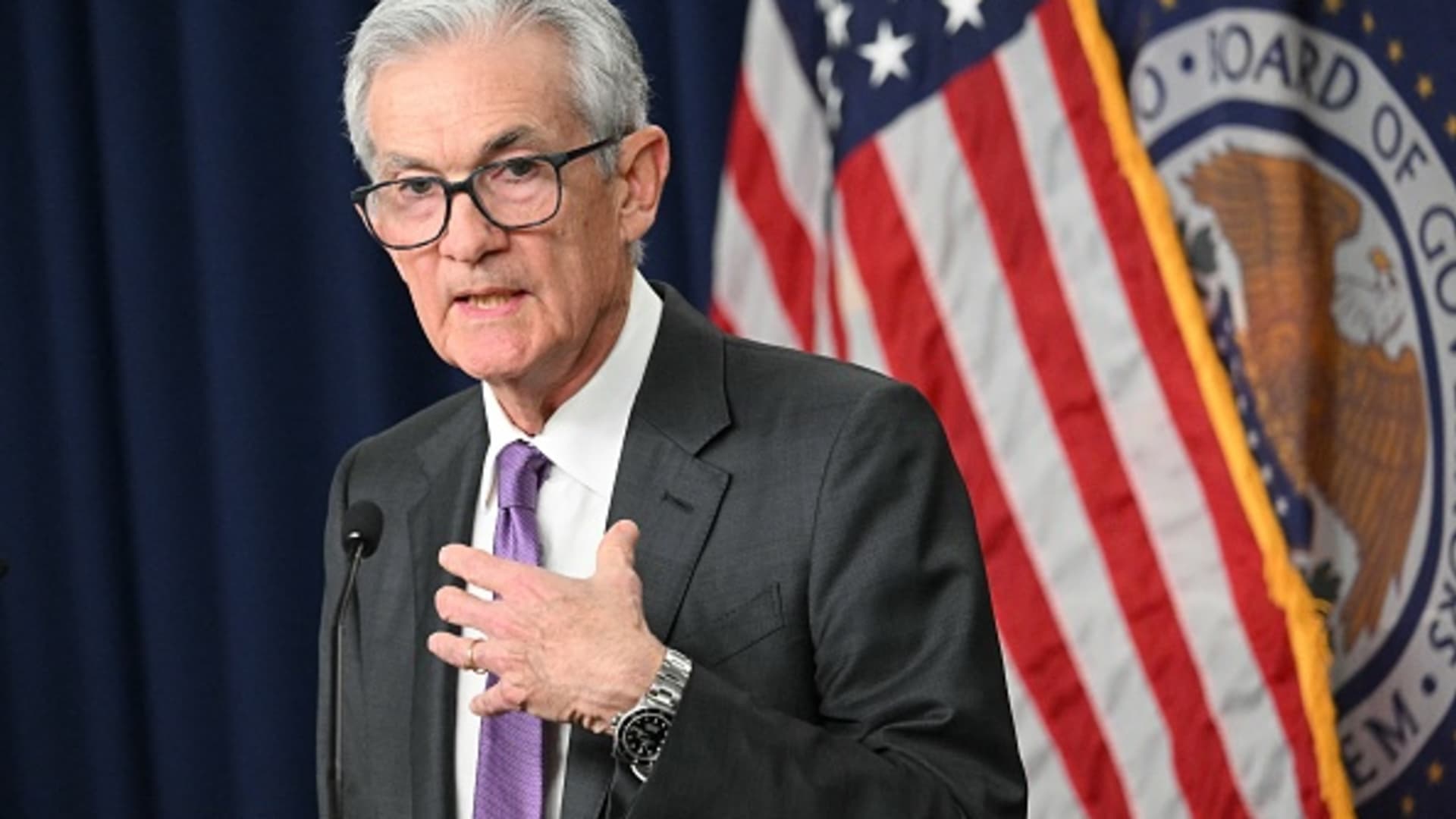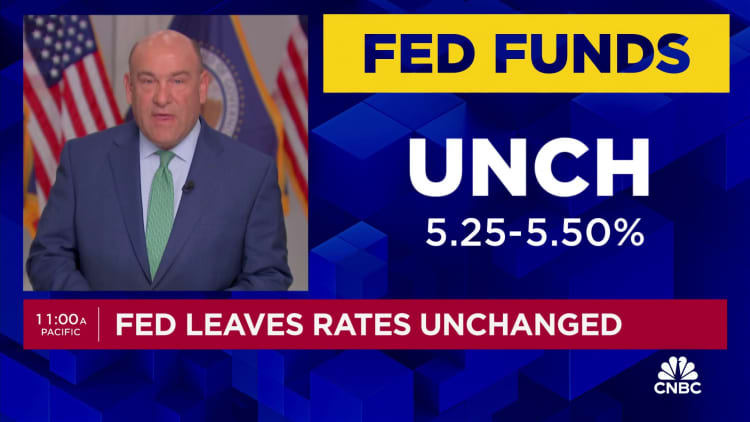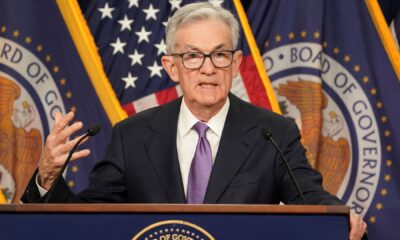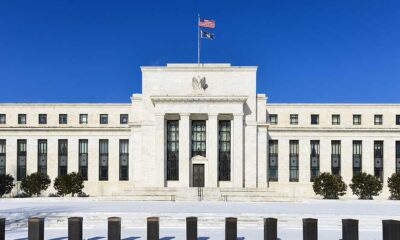Finance
Fed interest rate decision May 2024: Fed keeps interest rates stable


WASHINGTON – The Federal Reserve stood firm on interest rates Wednesday, deciding again not to cut as the fight against inflation has become more difficult of late.
In a widely expected move, the US central bank kept its short-term interest rate within a target range of 5.25% to 5.50%. The federal funds rate has been at that level since July 2023, when the Fed last raised rates, taking them to the highest level in more than two decades.
The rate-setting Federal Open Market Committee has voted to slow the pace at which it is reducing bond positions on the central bank’s massive balance sheet, in what could be seen as a gradual easing of monetary policy.
In deciding to keep interest rates on hold, the committee noted in its statement after the meeting that “no further progress” has been made in reducing inflation to the 2% target.
“The Committee does not expect that it will be appropriate to lower the target range until it has gained greater confidence that inflation is moving sustainably toward 2 percent,” the statement said, repeating language it had adopted after the January and March meetings used.
The statement also changed the characterization of progress toward the dual mandate of stable prices and full employment. The new language hedges a bit, saying the risks of achieving both “have moved toward a better balance over the past year.” Previous statements said risks were “reaching a better balance.”
Otherwise, the statement was little changed, with economic growth characterized as at a “solid pace” amid “strong” job growth and “low” unemployment.
During the press conference after the decision, Chairman Jerome Powell elaborated on the idea that prices are still rising too quickly.
“Inflation is still too high,” he said. “Further progress in reducing it is not assured and the path forward is uncertain.”
Investors, however, welcomed Powell’s comment that the Fed’s next move would be “unlikely” to raise rates. The Dow Jones Industrial Average jumped after the comments, rising as much as 500 points. He also emphasized the need for the committee to make its decisions on a meeting-by-meeting basis.
On the balance sheet, the commission said that from June it will slow the pace at which it will drain maturing bond yields without reinvesting them.
‘Quantitative tightening’
In a program that began in June 2022 and was nicknamed “quantitative tightening,” the Fed had been bleeding up to $95 billion in proceeds each month from maturing Treasuries and mortgage-backed securities. The process has resulted in the central bank’s balance sheet shrinking to about $7.4 trillion, or $1.5 trillion less than its peak around mid-2022.
Under the new plan, the Fed will lower the monthly cap on Treasury bonds from $60 billion to $25 billion. That would bring the annual reduction in holdings to $300 billion, compared to $720 billion from when the program began in June 2022. Potential mortgage repayments would remain unchanged at $25 billion per month, a level that has rarely been reached. .
QT was one of the ways the Fed tightened conditions after inflation rose, as it retreated from its role of ensuring the flow of liquidity through the financial system by buying and holding large amounts of Treasury and government bonds. The reduction in balance sheet reduction can therefore be seen as a slight relaxation measure.
The fund rate determines what banks charge each other for overnight loans, but it affects many other consumer debt products. The Fed uses interest rates to control the flow of money, with the intention that higher interest rates will dampen demand and thus help lower prices.
However, consumers have continued to spend, increasing credit debt and reducing savings levels as persistently high prices eat away at households’ finances. Powell has repeatedly cited the harmful effects of inflation, especially on lower-income people.
Prices outside peak levels
Although price increases are well above their peak in mid-2022, most data so far in 2024 shows inflation remaining well above the Fed’s annual target of 2%. The central bank’s main gauge shows annual inflation of 2.7% – 2.8% when food and energy are excluded from the crucial core measure the Fed focuses on as a signal of longer-term trends .
At the same time, gross domestic product grew at a less than expected 1.6% annual rate in the first quarter, raising concerns about the possibility of stagflation with high inflation and slow growth.
Most recently, the Ministry of Labor’s labor cost index recorded the largest quarterly increase in a year this week, causing another shock to financial markets.
As a result, traders have had to dramatically adjust their interest rate expectations. While the year started with markets pricing in at least six rate cuts that should have started in March, the outlook is now just one, and probably not until the end of the year.
Fed officials have been almost unanimous in calling for patience in easing monetary policy as they look for confirmation that inflation is comfortably returning to target. One or two officials have even mentioned the possibility of a rate increase if the data doesn’t cooperate. Atlanta Fed President Raphael Bostic was the first to specifically say he expects only one rate cut this year, likely in the fourth quarter.
In March, FOMC members announced three rate cuts this year, based on quarter-percentage-point intervals, and won’t have a chance to update that call until the June 11-12 meeting.
Correction: The Federal Reserve kept short-term interest rates within a target range between 5.25% and 5.50%. An earlier version indicated the range incorrectly. The Fed’s next meeting is June 11-12. An earlier version misstated the date.











